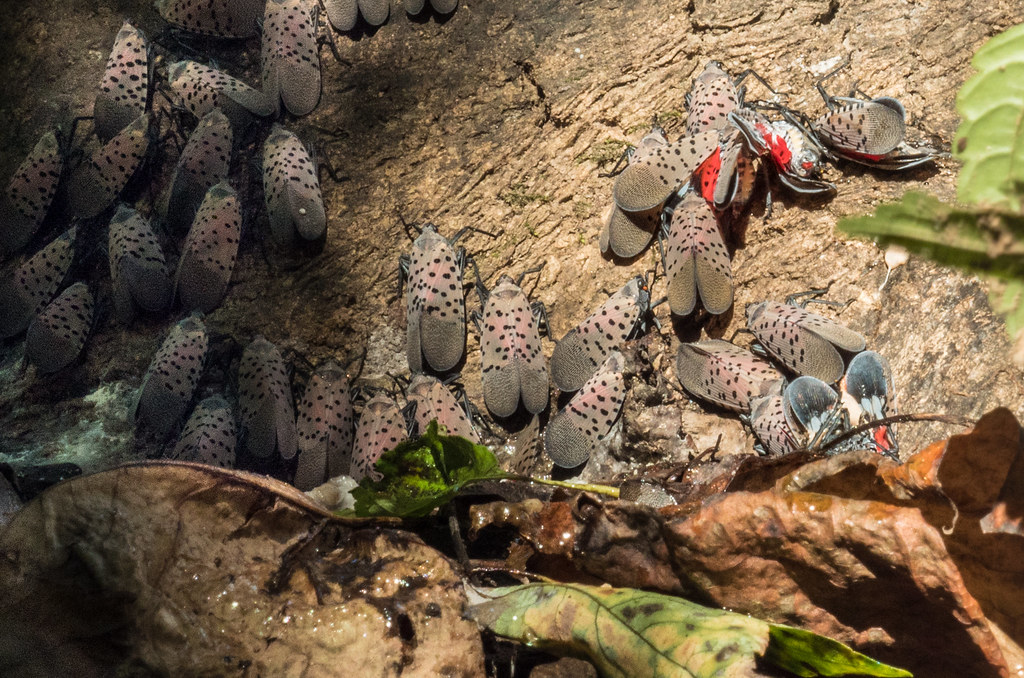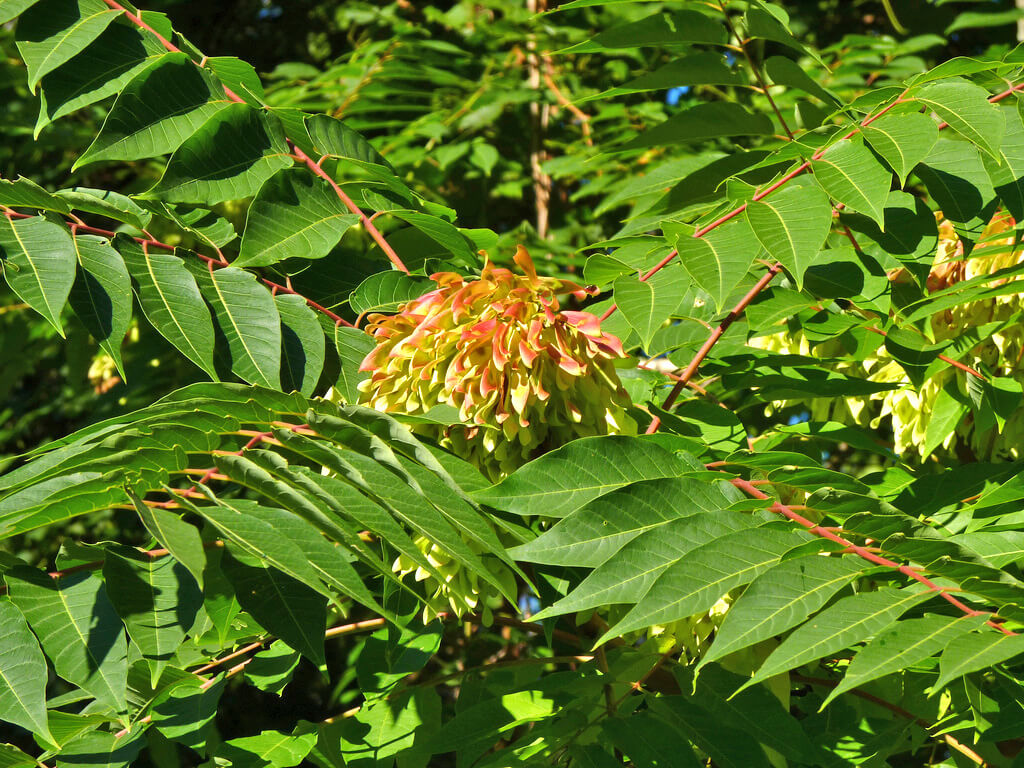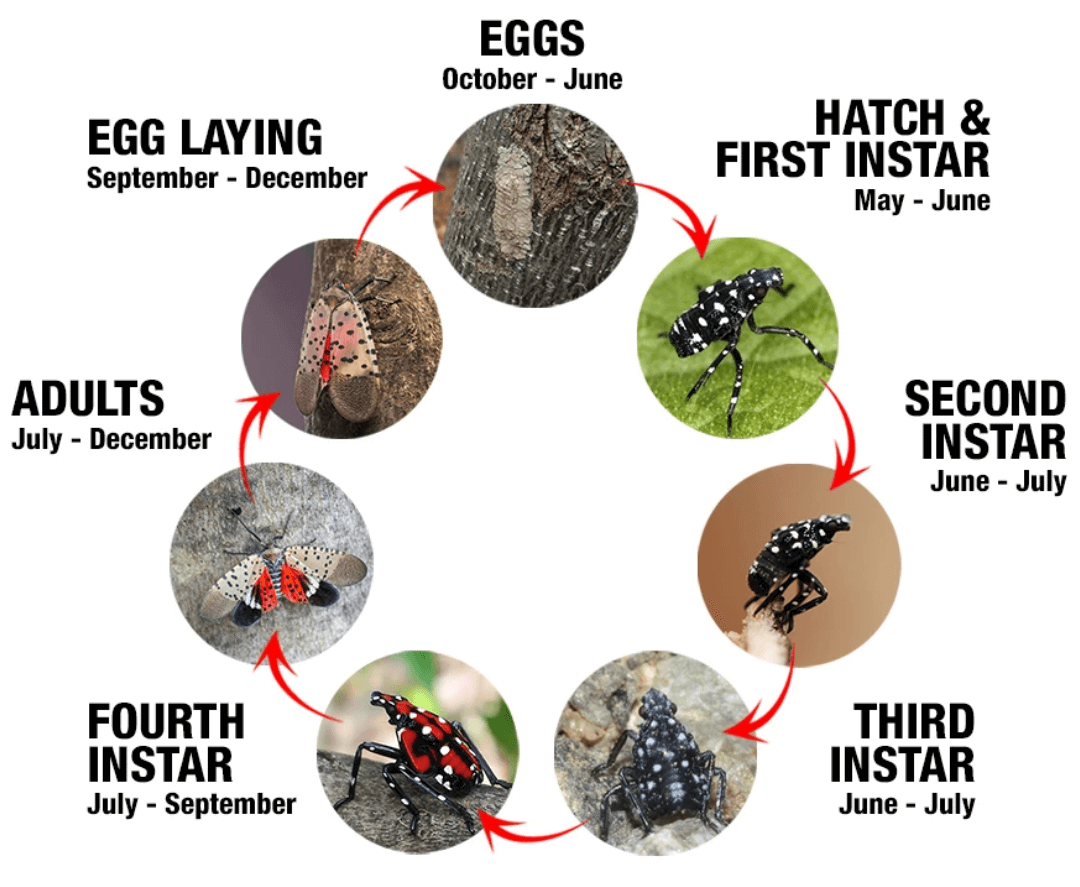Spotted Lanternfly: What You Need to Know
Play your part in stopping this invasive species
Fast Facts
- The Spotted Lanternfly (SLF), an invasive species native to Asia, feeds on 70+ plants, including timber and agricultural products, causing substantial economic damage across the state and mid-Atlantic.
- They can decimate these crops in a single season.
- The SLF prefers the Tree of Heaven, another invasive species that is taking over PA landscapes.
- There are several Quarantine Counties in Pennsylvania, which means that the SLF has a confirmed presence and certain businesses/organizations must obtain and comply with permit conditions.
- The SLF goes through seven life stages. They are only able to fly in the last stage.
- Eggs can be hatched on any surface, including cars, shipping containers and furniture, making spread prevention much more difficult.
- YOU can play a critical role in stopping the spread!
About the Spotted Lanternfly
This invasive species has taken over 34 counties in Pennsylvania alone. The Spotted lanternfly (SLF) threatens agriculture across the state from orchards and vineyards to hardwoods and nurseries. The insect feeds on sap in tree trunks, branches, twigs, leaving a greyish/black oozing trail along the bark of the plant. The substance it excretes while feeding is called “honeydew,” which also attracts bees and encourages fungal growth at the base of host trees, stunting its growth.
Native to China, the SLF is suspected of hitching a ride on a cargo shipment into a Philadelphia port where it started reproducing. Since its initial arrival, the insect has broken out of Pennsylvania into Virginia, New Jersey and New York.

photo credit: "20180829-APHIS-LSC-1176" by USDAgov is marked with CC PDM 1.0
To slow the spread, restricted movement of the following products in and out of quarantine counties has been put in place:
- Brush
- Debris
- Bark
- Yard Waste/Construction Waste
- Logs, Stumps, Tree Parts
- Firewood
- Grapevines
- Plant Nursery Stock
- Crated Materials
- Outdoor Recreational Products
As of May 2019, businesses sending vehicles or products in or out of quarantine zones are required to obtain a permit and special training to identify and locate SLF or egg masses on their vehicles. For more information about SLF permits, visit Pennsylvania Department of Agriculture.
Tree of Heaven
The SLF is particularly attracted to its host tree, the Tree of Heaven or Ailanthus Altissima. The tree is known for its rapid growth and is also invasive. It can grow up to 100 feet tall and 6 feet wide. The bark is smooth and green during its infancy but becomes light brown/grey into adulthood. Many have described the bark as “cantaloupe skin." The leaves of the Tree of Heaven are centrally stemmed with 10 to 40 lance-shaped leaflets on either side.
At the base of the stem, the leaflet has 1 to 2 protruding bumps or glandular teeth and emits a strong odor when the leaf is crushed. The seeds of the female trees are clustered, 1 to 2 inches long, and hang on the tree throughout the winter. The Tree of Heaven produces a very high pollen count and can also cause irritation or dermatitis when in contact with bare skin. Wear gloves and other protective skin covering when interacting with the Tree of Heaven.

photo credit: "Tree-of-heaven" by NatureServe is licensed under CC BY 2.0
Life Cycle
The SLF exist in seven life stages before natural death.
- From September to the following June, they are dormant in their egg masses.
- Around April through June, they begin to emerge in their first instar phase.
- From June to July, they grow into their second instar phase: small and black with white polka dots
- Then from their slightly larger third instar phase, they begin to take on their signature red color in the fourth instar phase from July to September. This is the last chance to stop them before they begin laying eggs for the next year.
- From July to December, the SLF are full adults and egg laying. The egg masses will then lie dormant for the remainder of winter until the following spring season.

photo credit: Penn State Extension
Why You Should Care
The Spotted Lanternfly poses a major threat to Pennsylvania’s economy, at least $324 million annually, according to Penn State Extension. It also threatens the health of trees and the outdoor recreation industry. More than 34 counties have been added to the list of quarantine zones across PA. It is crucial to stop the spread of Spotted Lanternflies now before they begin laying their eggs each winter.
Find More Resources
For more information about how to identify, report or manage the spread of SLF, visit Penn State Extension.
To report a sighting, use the reporting tool or call the hotline at 1-888-422-3359.